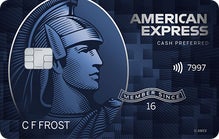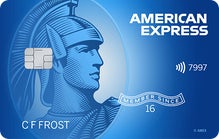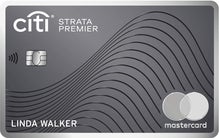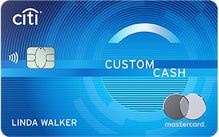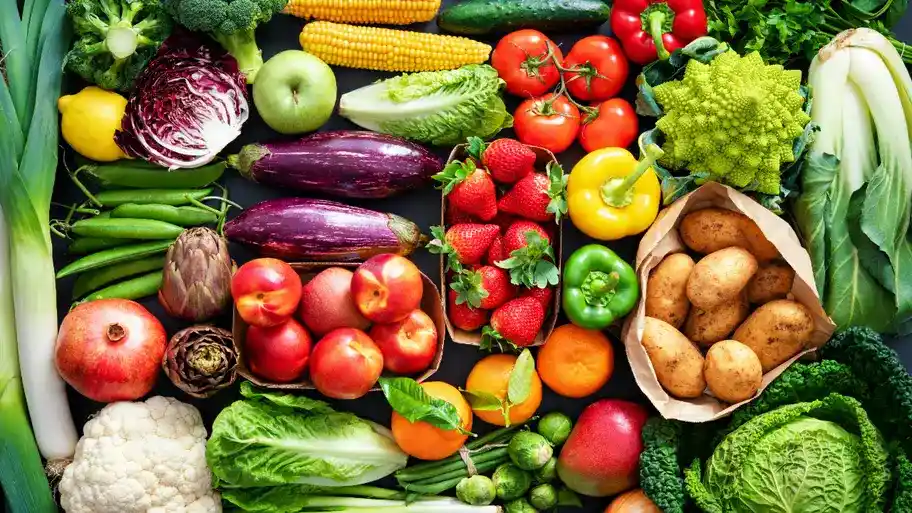8 best credit cards for groceries for July 2025
Advertiser Disclosure: Bankrate’s editorial team chooses and recommends the credit cards on this page. While we may receive compensation when users apply for cards through this page, our recommendations and card ratings are produced independently without influence by advertising partnerships with issuers.
Filter by
Showing 8 results
Apply with confidence
By applying, you can see if you're approved before impacting your credit
Best grocery rewards rate
Cardholder rating
on American Express's secure site
See Rates & Fees, Terms ApplyIntro offer
Earn $250
Rewards rate
1% - 6%
Annual fee
$0 intro annual fee for the first year, then $95.
APR
20.24%-29.24% Variable
Why you'll like this: It offers the most generous rewards rate you can get on U.S. supermarket purchases, plus solid rates in other key spending categories.
Reward Details
What you should know
Card Details
Apply with confidence
By applying, you can see if you're approved before impacting your credit
Best for travel rewards on groceries
Cardholder rating
on American Express's secure site
See Rates & Fees, Terms ApplyIntro offer
As High As 100,000 points. Find Out Your Offer.
Rewards rate
1X - 4X
Annual fee
$325
APR
See Pay Over Time APR
Why you'll like this: It earns valuable, flexible points on groceries and offers a ton of value with its dining and travel credits.
Reward Details
What you should know
Card Details
Apply with confidence
By applying, you can see if you're approved before impacting your credit
Best for everyday expenses + no annual fee
Cardholder rating
on American Express's secure site
See Rates & Fees, Terms ApplyIntro offer
Earn $200
Rewards rate
1% - 3%
Annual fee
$0
APR
20.24%-29.24% Variable
Why you'll like this: It boasts a solid rewards rate on U.S. supermarkets, U.S. gas stations and U.S. online retail purchases, making it an ideal standalone option for everyday rewards.
Reward Details
What you should know
Card Details
Best for everyday expenses + travel
Intro offer
Earn 60,000 bonus ThankYou® Points
Rewards rate
1X - 10X
Annual fee
$95
Regular APR
20.24% - 28.24% (Variable)
Why you'll like this: You’ll earn competitive, unlimited rewards rates on a variety of everyday and travel categories, including groceries.
Reward Details
What you should know
Card Details
Best for groceries + dining
Cardholder rating
on Capital One's secure site
See Rates & FeesIntro offer
Earn $200 Cash Back
Rewards rate
1% - 8%
Annual fee
$0
Regular APR
19.24% - 29.24% (Variable)
Why you'll like this: It rewards foodies of all stripes since it's one of the few cards with such lucrative grocery and dining categories.
Reward Details
What you should know
Card Details
Best for wholesale clubs
Cardholder rating
Intro offer
$200
Rewards rate
1% - 6%
Annual fee
$0
Regular APR
18.24% - 28.24% Variable APR on purchases and balance transfers
Why you'll like this: On top of the rare wholesale club and grocery store rewards, you can choose a competitive rewards category each month to suit your spending outside grocery and wholesale stores, including gas, online shopping and more.
Reward Details
What you should know
Card Details
Best for online groceries
Cardholder rating
on Chase's secure site
See Rates & FeesIntro offer
75,000 bonus points
Rewards rate
1x - 5x
Annual fee
$95
Regular APR
19.99% - 28.24% Variable
Why you'll like this: Its flexible rewards program offers great rates for online grocery orders.
Reward Details
What you should know
Card Details
Best grocery rewards rate + no annual fee
Intro offer
$200
Rewards rate
1% - 5%
Annual fee
$0
Regular APR
18.24% - 28.24% (Variable)
Why you'll like this: It allows you to earn an exceptional cash back rate on your top eligible spending category each billing cycle, which could be grocery stores.
Reward Details
What you should know
Remove a card to add another to compare
Remove a card to add another to compare
Compare Bankrate's best credit cards for groceries
| Card name | Best for | Card highlights |
|---|---|---|
Apply with confidence Hover to learn more on American Express's secure site See Rates & Fees, Terms Apply | Grocery rewards rate | Intro Offer: Earn $250 Hover to learn more Regular APR: 20.24%-29.24% Variable |
Apply with confidence Hover to learn more on American Express's secure site See Rates & Fees, Terms Apply | Travel rewards on groceries | Intro Offer: As High As 100,000 points. Find Out Your Offer. Hover to learn more Regular APR: See Pay Over Time APR |
Apply with confidence Hover to learn more on American Express's secure site See Rates & Fees, Terms Apply | Everyday expenses + no annual fee | Intro Offer: Earn $200 Hover to learn more Regular APR: 20.24%-29.24% Variable |
Everyday expenses + travel | Intro Offer: Earn 60,000 bonus ThankYou® Points Hover to learn more Regular APR: 20.24% - 28.24% (Variable) | |
Groceries + dining | Intro Offer: Earn $200 Cash Back Hover to learn more Regular APR: 19.24% - 29.24% (Variable) | |
Apply now on Bank of America's secure site | Wholesale clubs | Intro Offer: $200 Hover to learn more Regular APR: 18.24% - 28.24% Variable APR on purchases and balance transfers |
Online groceries | Intro Offer: 75,000 bonus points Hover to learn more Regular APR: 19.99% - 28.24% Variable | |
Grocery rewards rate + no annual fee | Intro Offer: $200 Hover to learn more Regular APR: 18.24% - 28.24% (Variable) |
Eligibility and Benefit level varies by Card. Terms, Conditions and Limitations Apply. Please visit americanexpress.com/benefitsguide for more details. Underwritten by Amex Assurance Company.
What is a grocery store credit card?
Grocery rewards cards earn cash back or points on purchases at eligible grocery stores. Groceries are often one of the most lucrative bonus categories for consumers, considering food and household products are the backbone of most budgets.
Typically, only purchases at traditional grocery stores and supermarkets earn bonus rewards, so you may need to explore more options if you mostly shop at superstores like Walmart and Target, wholesale clubs, online retailers or specialty food stores.
Types of grocery store credit cards
Although many popular grocery rewards cards are general-purpose cards with multiple bonus categories, some of the top options are co-branded with a particular retailer or will only work or earn rewards at specific stores. Here’s a look at the different types of grocery cards, the eligible grocery purchases and rewards value typical for each type and which option will be the best fit for various cardholders.
The most popular grocery cards are usually general-purpose cash rewards cards with grocery store bonus categories that typically earn anywhere from 3 percent to 6 percent cash back. The stores that fall within these categories are typically classified as supermarkets or grocery stores based on their merchant category code. This category usually includes favorites like Aldi, Trader Joe’s, Albertsons, Kroger, Publix and many other local grocery stores.
Although Costco, Walmart and Target are some of the biggest grocers and wholesale clubs, they usually don’t fall under traditional supermarket categories.
Best general cash back grocery credit cards: Bank of America® Customized Cash Rewards credit card, Blue Cash Preferred® Card from American Express and U.S. Bank Shopper Cash Rewards® Visa Signature® Card*
Some retailers offer a co-branded store card that you can use anywhere or a closed-loop card, which you can only use at those store locations. Both options are usually no-annual-fee cards that earn 2 percent to 5 percent back on in-store and online purchases.
On the other hand, store cards aren’t as rewarding outside the retailer, and closed-loop store cards are useless outside the store altogether. Some of these store cards may also make redeeming rewards overly complicated, or require paying for a higher-tier store membership for worthwhile rewards rates.
Best co-branded grocery cards: Costco Anywhere Visa® Card by Citi* and Sam's Club® Mastercard®*
If you’re mainly stockpiling rewards for flights, hotel stays or future vacations, it may be worth considering one of the handful of travel cards that reward grocery categories.
If you have a favorite airline or hotel brand, though, it might also be worth considering a co-branded travel card. But few reward grocery purchases, and these categories are slightly more common across co-branded hotel cards than airline cards.
Best general travel cards for groceries: Chase Sapphire Preferred, Citi Strata Premier and the American Express Gold Card
Some grocery delivery services like Instacart may count under standard grocery categories, but eligibility can vary by issuer, service and card network. If you order groceries through delivery apps and other third-party services relatively often, you may want to consider one of the few cards with dedicated food delivery perks. The best options are usually co-branded and earn around 5 percent rewards with the partnering delivery service.
Some no-annual-fee, general-purpose rewards cards may provide limited-time delivery service perks — like the Chase Freedom Unlimited® card’s six-month complimentary DoorDash DashPass membership (activate by Dec. 31, 2027).
Best online and grocery delivery cards: Instacart Mastercard®*, Prime Visa card and Chase Sapphire Preferred
How to choose the best grocery credit card
Finding the right grocery credit card can help you earn maximum rewards on purchases you frequently make. Here’s some advice from our top credit card experts to help you in your search.
- See where you shop the most: A general-purpose credit card that offers grocery rewards is a good pick if you want the flexibility to shop at a broad mix of grocery stores and supermarkets. But if you are loyal to a specific store or brand, a co-branded credit card or a flat-rate rewards card may offer the best value.
- Check your grocery spending: Some cards have spending caps for top rewards rates, so review your average grocery spending in the past few months to determine if you'll hit these spending caps. You may want a second grocery credit card to maximize your rewards, especially if grocery stores are your biggest spending category.
- Choose flat-rate or bonus categories: A grocery rewards card with simple or flat-rate rewards may work better if you want to easily rack up rewards wherever you shop. You likely won’t earn as many rewards, but you won’t have to jump through so many hoops, either. If you’d like to travel and want to wring the most value possible from your rewards, you may want to consider a travel card with a grocery-related category.
- Look at annual fees: Not everyone will spend enough to offset the annual fee of some of the most lucrative grocery store credit cards. Luckily, some of the best grocery rewards cards come with no annual fee, making them a great option for people who don’t spend enough at the grocery store to justify the annual cost.
- Compare benefits and welcome offers: The right grocery rewards card can offer standout perks that increase the card’s short- and long-term value. These may include a generous welcome bonus, introductory APR offer, and annual credits. If you’re considering a travel card to reward your grocery expenses, look for perks like limited-time grocery delivery service memberships and credits, and meal-kit subscription trials.
Tips for maximizing a grocery store credit card
Once you’ve chosen the right grocery store credit card, you can start planning to get the most out of your new card. Here are some tips to help you get the most satisfying experience out of your grocery rewards card.
Many wholesale clubs like Sam's Club, BJ's and Costco use cost-first strategies that offer shoppers the best prices, rewards and promotions. However, they are often excluded as a bonus category on most rewards cards. If you shop frequently at a grocery store that offers a co-branded card, you may want to consider it — even as a partner to your general grocery card — in order to get the maximum return on your grocery spending.
Grocery cards often come with additional reward categories, so picking one with categories that complement other major expenses is key to getting the most bang for your buck. For example, gas and E.V. charging stations are perhaps the most popular extra category that comes with grocery cards. Getting gas at wholesale clubs usually won't count toward general-purpose cards' gas station categories, so a co-branded grocery card that can reward where you fuel up most will help maximize your spending.
Some grocery cards may come with complimentary delivery service trials like food/grocery delivery services and credits for similar partner services like meal-kit subscriptions. These perks may only last for a few months or a year, but using them to get your usual groceries while the benefits last could stack on significant savings.
How much could you earn with a grocery credit card?
According to the most recent data released by the Bureau of Labor Statistics, the average annual cost of household groceries in 2023 was around $6,000. That averages out to about $500 a month spent on groceries — a big chunk of the average person’s budget.
When used responsibly, grocery rewards cards can help you save money by giving you back a percentage of your grocery spending in the form of cash back, points or travel miles. How much you can earn depends on your spending habits and the type of grocery rewards card you choose. Take a look at the examples below to see how much you could save each year depending on the credit card.
| Payment method | Rewards rate | Estimated rewards earned | Annual fee |
| Cash or card with no rewards | N/A | $0 | $0 |
| Flat-rate 2% cash back card | 2% back on eligible purchases | $120 | $0 |
| Capital One Savor Cash Rewards Credit Card | 3% back on grocery store purchases (excluding Target & Walmart) | $180 | $0 (See Rates & Fees) |
| Citi Custom Cash Card | 5% back in your top spending eligible category (includes grocery stores, on up to $500 per billing cycle, then 1%) | $300 | $0 |
| Blue Cash Preferred from American Express | 6% back at U.S. supermarkets (on up to $6,000 per year, then 1%) | $360 | $95 ($0 intro annual fee for the first year) |
Here’s how Bankrate experts maximize grocery card rewards
Groceries are a huge portion of many household budgets, and several Bankrate experts’ personal favorite cards either have grocery categories or a boosted flat rewards rate that can help handle groceries. Here's how Bankrate staff take advantage of their regular grocery spending to get plenty of rewards.
Bankrate staff insights
Frequently asked questions about grocery rewards cards
How we choose the best grocery store credit cards
We select cards for “Best” credit cards pages based primarily on how cards score in our proprietary card rating system, our editors’ subjective assessment of card quality, card approval odds and credit requirements and unique card features.
Cards typically must score a minimum of 3.0 stars to be included on a “Best” list. However, we may include cards with scores below 3.0 if they have low credit requirements or unique features — despite their scores, these cards may still be among the “best” in certain categories. Card ratings are not influenced by advertisers or issuer relationships in any way.
Card selection and ordering may vary based on business considerations, including Bankrate visitor interest, site interactions and card application volume. Affiliate commissions (see how we make money), limited-time offers and a card’s general popularity in the product landscape may also influence which cards we feature on our pages and the order in which they appear. Bankrate’s editorial and business teams also strive to feature a variety of card types from various issuers.
Here’s a quick look at how our rating methodology breaks down for grocery rewards cards:
Rewards & cash back card scoring factors
-
Value 65%
-
Flexibility 15%
-
Perks 15%
-
Customer experience 5%
*Information about the Target RedCard™has been collected independently by Bankrate.com. The card details have not been reviewed or approved by the card issuer.
For Capital One products listed on this page, some of the benefits may be provided by Visa® or Mastercard® and may vary by product. See the respective Guide to Benefits for details, as terms and exclusions apply.
